In figure circuit section AB absorbs energy at the rate of 5.0W when a currenti=1.0A passes through it in the indicated direction.
(a) What is the potential difference between points A and B?
(b) Emf device X does not have internal resistance. What is its emf?
(c) What is its polarity (the orientation of its positive and negative terminals)?

10V
50V
20V
30V
The correct Answer is:B
As section AB consumes 50Wat1AandP=VI. S0
V=VA−VB=PI=501WA=50V
As RandC are in series,
V=VR+VCorVC=V−VR
But here V=50VandVR=IR=1×2=2V. So VC=50−2=48V.
Now as the element C absorbs energy and has no resistance , it is a source of emf with zero internal resistance ( i.e., ideal battery ). So emf
is E=V+Ir=48+1×0=48V.
As in charging , positive and negative terminals of the charger are connected to the positive and negative terminals of the battery, respectively ,B is connected to the negative terminal of element C.
Topper's Solved these Questions
- HEATING EFFECT OF CURRENTBOOK - CENGAGE PHYSICS ENGLISHCHAPTER - HEATING EFFECT OF CURRENTEXERCISE - Integer
5 Videos
- HEATING EFFECT OF CURRENTBOOK - CENGAGE PHYSICS ENGLISHCHAPTER - HEATING EFFECT OF CURRENTEXERCISE - Calculating Thermal Power in Resistance
14 Videos
- HEATING EFFECT OF CURRENTBOOK - CENGAGE PHYSICS ENGLISHCHAPTER - HEATING EFFECT OF CURRENTEXERCISE - Assertion - Reasoning
6 Videos
- GEOMETRICAL OPTICSBOOK - CENGAGE PHYSICS ENGLISHCHAPTER - GEOMETRICAL OPTICSEXERCISE - Integer Type
4 Videos
- INDUCTANCEBOOK - CENGAGE PHYSICS ENGLISHCHAPTER - INDUCTANCEEXERCISE - Concept Based
8 Videos
Similar Questions
Calculate the value of current and indicate its direction Also calculate the potential difference between the points (i) B&A (ii) A&C

View SolutionThe potential difference between the points A and B in the circuit shown is 16 V, Which is/are the correct statement(s) out of the following?
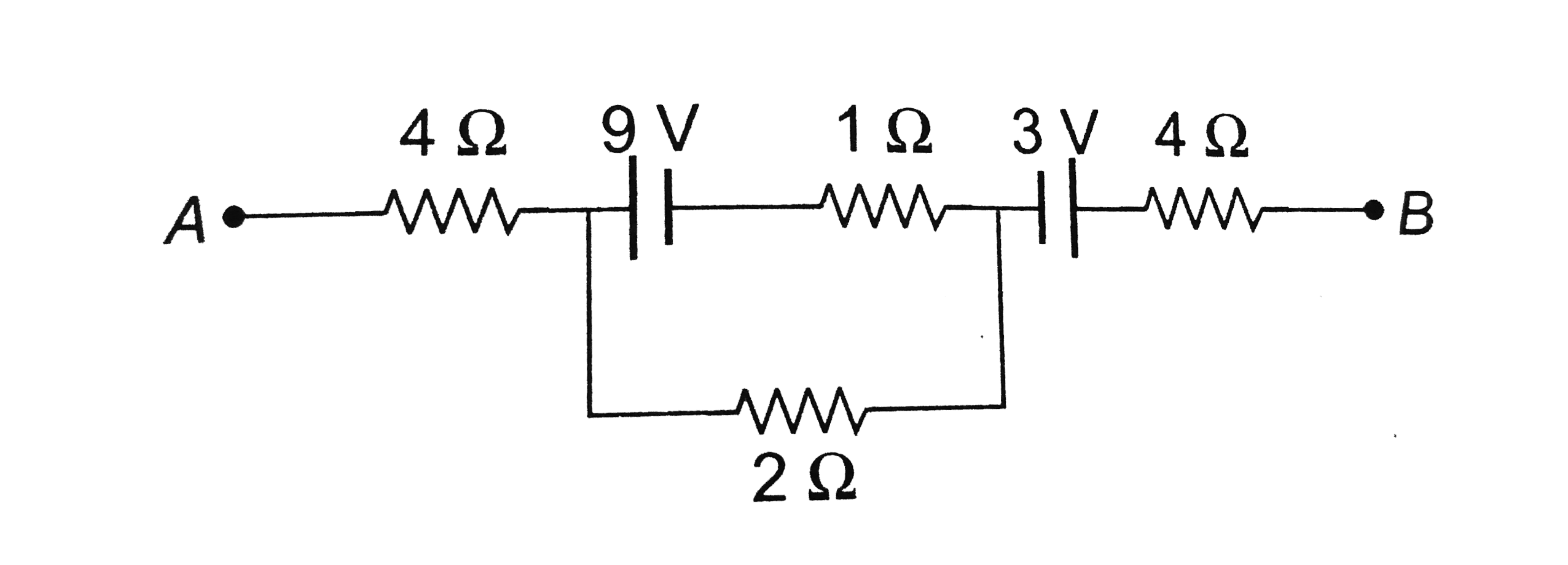
View SolutionIn the circuit of figure, the current in 4Ω resistance is 1.2A , what is the potential difference between B and C?

View Solution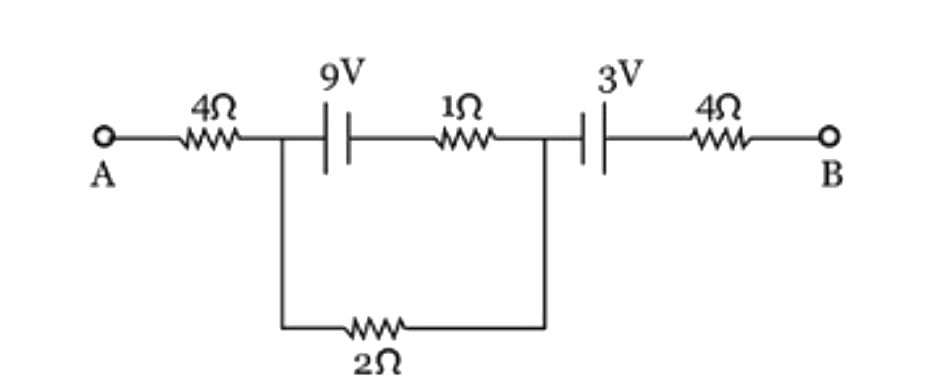
In the part of the circuit shown in the figure, the potential difference between points VA−VB=16V. The current passing through the 2Ω resistance will be
View SolutionFig. shows a part of circuit. When a current I = 1.5 A passes through it in the direction shown, power delivered to it (section XY) is 75W. Potential difference between X and Y and also the emf E of the cell are respectively (assume that the cell has a negligible internal resistance)

View SolutionCalculate the value of the resistance R in the circuit shown in the figure so that the current in the circuit is 0.2 A. What would be the potential difference between points B and E?
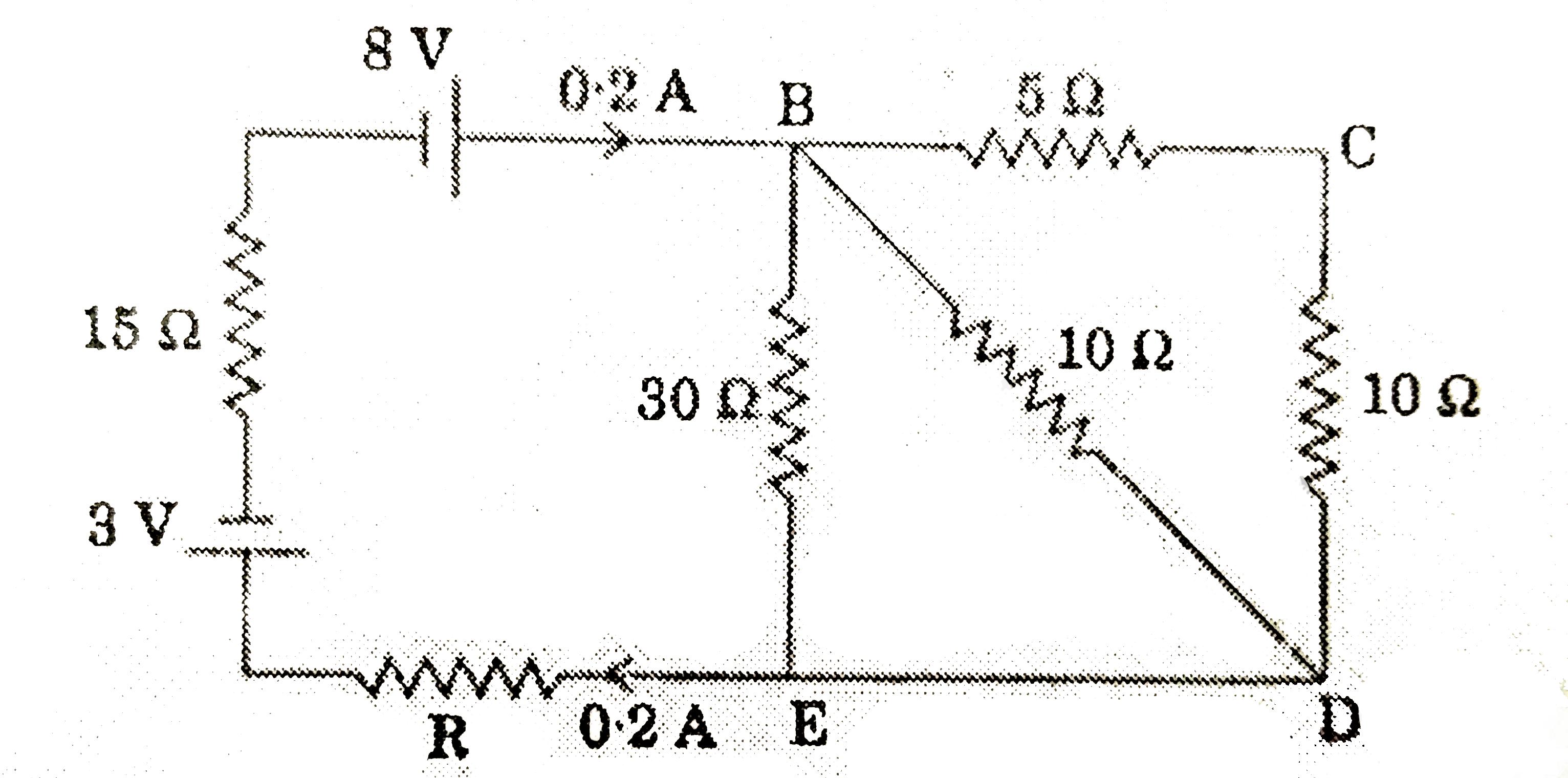
View SolutionIf in the circuit shown below, the internal resistance of the battery is 1.5Ω and VP and VQ are the potential at P and Q respectively, what is the potential difference between the point P and Q?
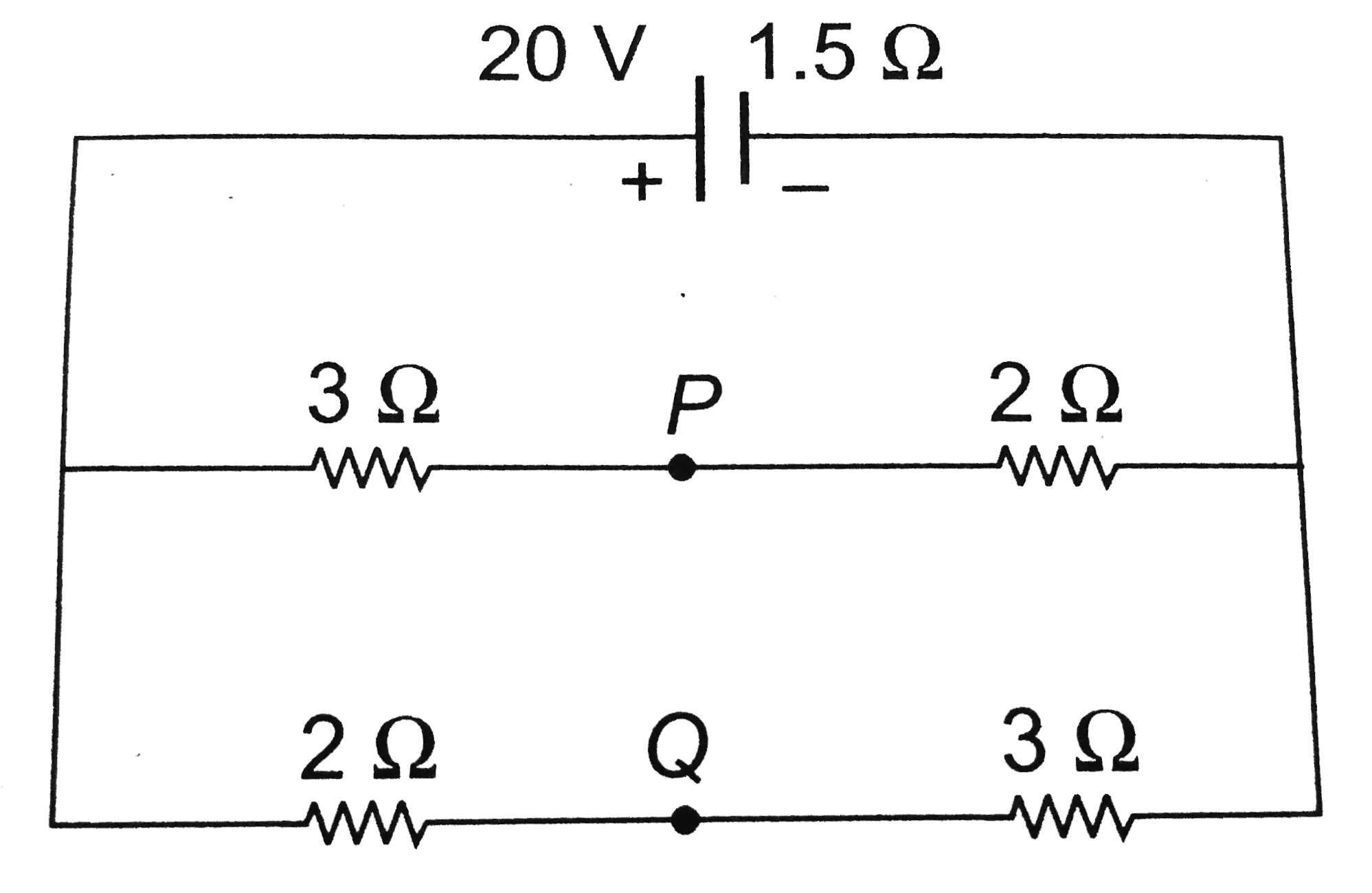
View SolutionCalculate the value of resistance R in the circuit shown in the figure so that the current in the circuits is 0.2A. What would be the potential difference between the points B and E ?
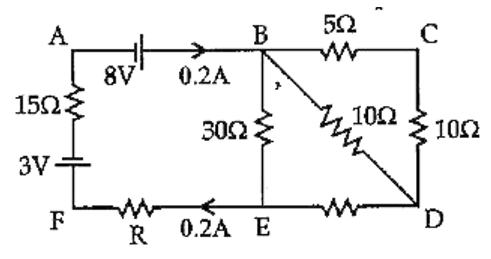
View SolutionThe potential difference between the terminals of a battery of emf 6.0V and internal resistance1(Ω)drops to 5.8 V when connected across an external resistor. Find the resistance of the external resistor.
View SolutionN identical current sources each of emf E and internal resistance r are connected to form a closed loop as shown in figure. The potential difference between points A and B which divides the circuit into n and (N-n) units is
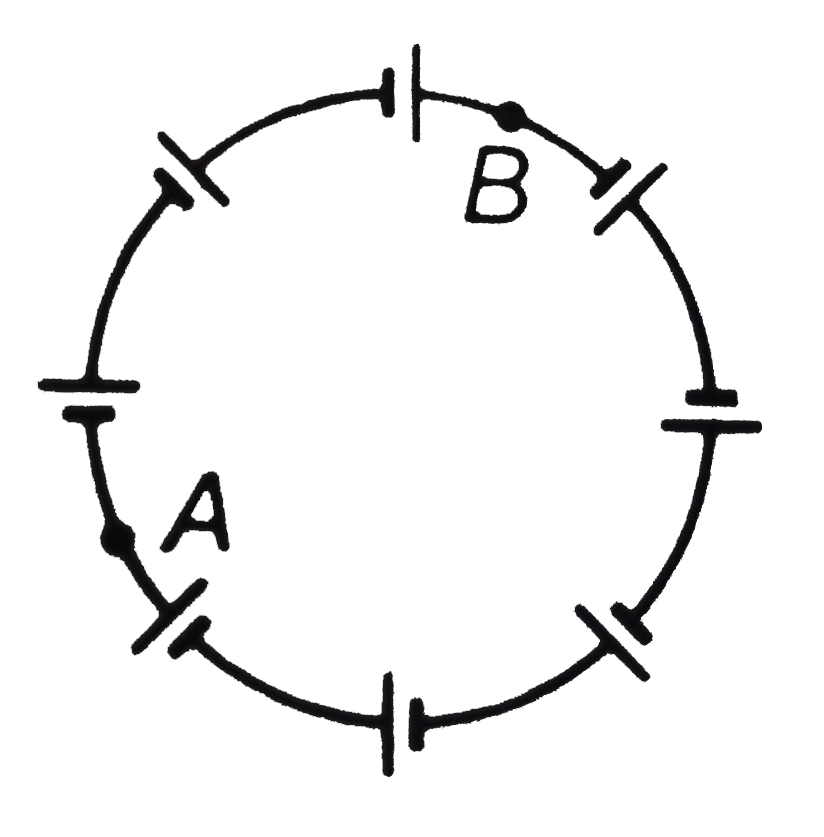
View Solution
